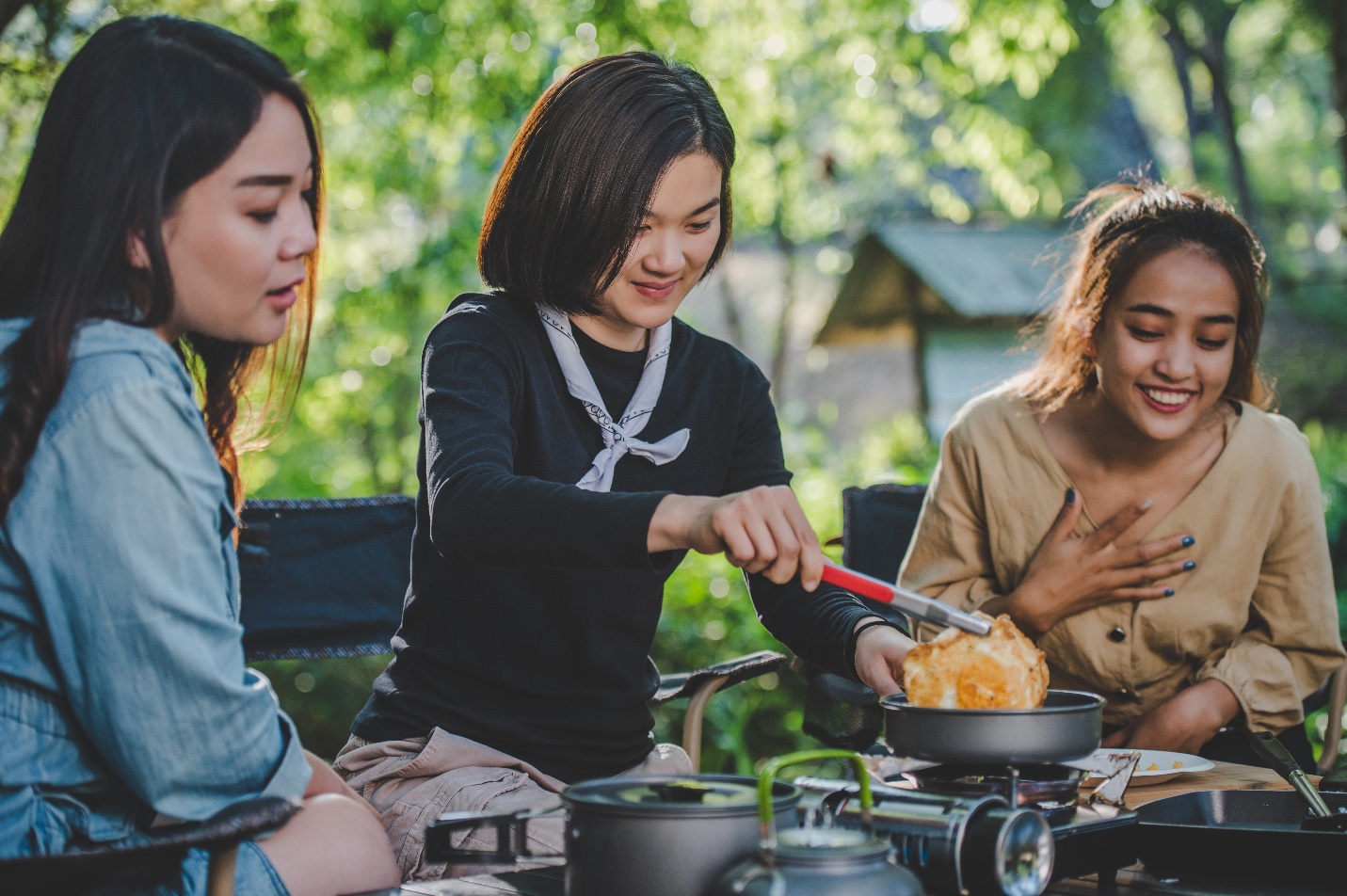You can use campfires, stoves, grills, or ovens to cook meals on camp. It’s important to use the right cooking equipment as in RV’s from trusworthy dealers. Keep food at a safe temperature and store leftovers properly to prevent food poisoning. Wash your hands before and after handling food.
Monitor the temperature of cooked food with a thermometer. Clean and disinfect cooking surfaces and equipment before and after use.
Best Tips for Cooking While Camping
Campfire Cooking: The Classic Method
Cooking over a campfire is a timeless and beloved tradition. The crackling flames and smoky aroma create a unique atmosphere that enhances any meal. Here are some popular methods for campfire cooking:
1. Skewers and Kabobs: Skewers are perfect for cooking meat, vegetables, and even fruits over an open flame. They are easy to prepare, cook quickly, and offer a fun way to eat. Marinate your ingredients beforehand for added flavor.
2. Foil Packets: Foil packet meals are a camper’s best friend. Simply wrap your ingredients—such as chicken, fish, vegetables, and seasonings—in aluminum foil and place them directly on the coals. This method allows for even cooking and minimal cleanup.
3. Dutch Oven: A Dutch oven is a versatile piece of equipment that can be used to cook stews, soups, casseroles, and even baked goods. Place it directly on the coals or hang it over the fire using a tripod.
Portable Stoves: Convenience and Control
Portable stoves offer a convenient and controlled way to cook meals while camping. They come in various sizes and fuel types, making them suitable for different camping styles.
1. Propane Stoves: Propane stoves are popular for their ease of use and reliability. They provide a consistent flame, making it easy to cook a wide range of meals. Many models come with multiple burners, allowing you to cook multiple dishes simultaneously.
2. Butane Stoves: Butane stoves are lightweight and compact, making them ideal for backpacking or minimalist camping. They are easy to set up and provide a strong, adjustable flame for precise cooking.
3. Alcohol Stoves: Alcohol stoves are a great option for ultralight camping. They are simple to use, with fuel that is widely available and easy to transport. While they may not provide as much heat as propane or butane stoves, they are perfect for boiling water and cooking simple meals.
Grills and Griddles: Versatile Cooking Solutions
Bringing a portable grill or griddle can elevate your camping meals by offering a variety of cooking options.
1. Portable Grills: Portable grills, whether charcoal or gas, allow you to cook everything from burgers and hot dogs to steaks and veggies. They are perfect for larger groups and offer a familiar cooking experience.
2. Camp Griddles: Camp griddles are flat cooking surfaces that can be placed over a campfire or used with a portable stove. They are excellent for cooking breakfast items like pancakes, bacon, and eggs, as well as sandwiches and quesadillas.
Cold Meals: No-Cook Options
Sometimes, you might prefer not to cook at all, especially during hot weather or when you’re short on time. Cold meals can be just as satisfying and require minimal effort.
1. Sandwiches and Wraps: Prepare a variety of sandwiches and wraps with your favorite fillings. They are easy to assemble and can be stored in a cooler for a quick and convenient meal.
2. Salads: Bring pre-washed greens and a selection of toppings such as grilled chicken, cheese, nuts, and dried fruits. Pair with a few different dressings to keep things interesting.
3. Snacks and Charcuterie: Create a snack platter with an assortment of cheeses, cured meats, crackers, fruits, and nuts. It’s a great option for sharing and requires no cooking.
Essential Tips for Successful Camp Cooking
- Plan Ahead: Create a meal plan and shopping list before your trip. Consider the duration of your trip, the number of people, and any dietary restrictions.
- Prep in Advance: Pre-chop vegetables, marinate meats, and measure out ingredients at home to save time and reduce the need for extensive preparation at the campsite.
- Pack Smart: Use airtight containers and zip-lock bags to keep your food fresh and organized. Label everything to avoid confusion.
- Practice Food Safety: Keep perishable items in a cooler with ice packs, and ensure meats are cooked to the right temperature to avoid foodborne illnesses.
- Minimize Waste: Bring reusable utensils, plates, and cups to reduce waste. Pack out all your trash and leave no trace.
- Stay Flexible: Be prepared for changes in weather or other unexpected situations that might affect your cooking plans. Having a variety of meal options can help you adapt.
Conclusion
Cooking meals while camping can be a delightful experience with the right options and preparation. Whether you prefer the traditional charm of campfire cooking, the convenience of portable stoves, the versatility of grills and griddles, or the simplicity of no-cook meals, there are plenty of ways to enjoy delicious food in the great outdoors.

